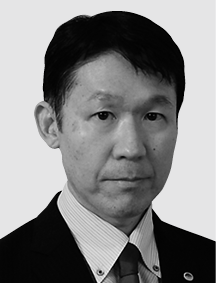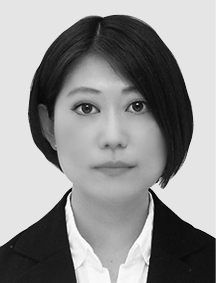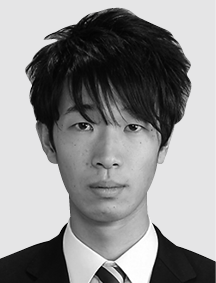Enhanced Welfare and Sustainable Societies Achieved through Digital Transformation of Physical Security
Highlight
With the advancements made in video analysis technology, centralized management has been enabled for physical security solutions, not only for incident detection and alerting, but also for assessing a situation before and after an incident. Solutions are also evolving to encompass security peripheral fields. Hitachi offers a centralized incident management solution that includes video data searching and forensics for incidents, and by applying its detection and analysis technologies developed in the security field, Hitachi has created value beyond security, such as by ensuring safety in city blocks and various facilities and by providing support to those who need assistance. This article describes examples of the physical security solutions that Hitachi offers, focusing on cases with video technology as the core.

Introduction
The advancement of physical security technology based on video analysis technology has enabled a wide range of centralized security management, including forensics, from mere security incident monitoring to tracking of suspicious people. In addition to security, there has been an evolution toward providing total safety and security services, such as safety monitoring to detect dangerous behavior and intrusion into dangerous areas, and support for those who need assistance.
Through the development of video analysis technology, Hitachi is proposing new value, not only in the traditional field of physical security, but also in solutions for realizing safety and security in public spaces and offices. Recently, companies have been forced to rethink their employees’ work styles in line with the shift to multiple locations and downsizing of offices with an eye on the post-COVID-19 world, and in response, Hitachi is also examining ways to support customer operations.
Based on these technologies and social trends, this article presents Hitachi’s initiatives in the public, building, and industrial fields for physical security solutions with video technology at their core.
Examples in the Public Sector
These days, a large number of cameras and sensors tend to be installed in cities to protect the safety and security of public areas. By integrating and managing video data showing the conditions in areas, video analysis technology can be used, for example, to find lost children or elderly people walking alone if the need arises, and this system is expected to enable higher efficiency in searching and locating people in security work.
The Hitachi Visualization Suite (HVS), a solution for centralized management of data obtained from edge devices such as cameras and sensors, can be used to monitor public areas and to identify areas for security enhancement by displaying the results of trend analysis of incidents on a dashboard.
Also, the High-speed Person Finder/Tracker Solution, which uses artificial intelligence (AI) image analysis technology, can narrow down from a vast amount of video data the images of people to be visually checked by rapidly filtering people with appearance characteristics that match specific conditions and displaying them in chronological order. This will reduce the time and effort required to find a lost child or an elderly person walking alone based on sighting information and contribute to improved work efficiency for police and security personnel.
Furthermore, by linking these two solutions, it is possible to display a map of the location where the subject was found, making it easy to know the location where the subject was last seen (see Figure 1).
In the future, expanded system functionality is expected to include a workflow that sends security personnel to the scene after a subject is detected. Hitachi hopes to make use of these solutions to ensure a stable supply of services that protect safety and security despite the labor shortages caused by a declining population.
Figure 1 — High-speed Person Finder/Tracker Solution and the Hitachi Visualization Suite This system enables tracking of suspicious people based on camera images and centralized management of incidents.
This system enables tracking of suspicious people based on camera images and centralized management of incidents.
Examples in the Building Sector
In office buildings, platforms are being developed for more advanced building management and providing services to workers and for enhancing the high added value of buildings required by the new normal, and this is expected to utilize linkage with video analysis and security technologies.
Centralized Monitoring of Incident Information
Hitachi building Internet of Things (IoT) solution enables centralized monitoring across multiple buildings of incident information obtained by using AI image analysis technology from images of suspicious people and unattended baggage captured by security cameras installed in office buildings, as well as alert information for building facilities for supporting more efficient and higher-quality building operations (see Figure 2).
Also, to ensure the safety and security of workers in the new normal, new technologies such as social distancing detection and mask detection will assist in creating the office spaces of the future.
Figure 2 — Alert and Camera Video Display The incident information and the number of incidents detected from the camera images and video can be centrally monitored from the Hitachi building IoT solution.
The incident information and the number of incidents detected from the camera images and video can be centrally monitored from the Hitachi building IoT solution.
Linking Smartphone Application for Workers to Access Control Systems
For worker access to office buildings, there have been calls to develop an alternative to the conventional access card key that can be used only in the building for which it was issued in order to accommodate the flexible work styles of workers who are not bound by a specific time or place.
Hitachi’s solutions link the access control system of the office building with the Hitachi office worker solution, which integrates the facility reservation management and office information necessary for office life and provides a centralized interface through a smartphone application for supporting new ways of working by office building workers, enabling access across multiple buildings using smartphones instead of card keys for entry and exit.
Examples in the Industrial Sector
In the manufacturing and distribution industries, there are cases where the appearance of products is visually inspected, but visual inspection has issues such as variations in inspection accuracy among workers and poor judgment due to fatigue from working long hours. Also, companies must deal with how to increase the number of employees if shipment volumes increase due to company growth. Replacing some of these visual inspections with AI image analysis can contribute to improved inspection accuracy, uniform quality, and reduced worker hours.
By applying this type of AI image analysis technology to physical security, Hitachi is pursuing initiatives to reduce worker hours from the current level while ensuring safety and security with high inspection accuracy (see Figure 3).
Figure 3 — Example of Applying Technology to Physical Security in the Industrial Field The AI technology used for product visual inspection can be used for object identification and inspection of personal belongings by X-ray when entering and exiting key facilities.
The AI technology used for product visual inspection can be used for object identification and inspection of personal belongings by X-ray when entering and exiting key facilities.
The first example is a solution that uses AI image analysis to assist in the visual inspection for hazardous materials for inspections that use X-ray inspection equipment to check that hazardous materials are not brought into a specific area. Detection of hazardous materials by AI image analysis can be combined with visual inspection by workers to detect hazardous materials within a limited time.
The second example is a solution that applies image analysis that does not require prior learning to the inspection process of verifying that items brought into a specific area were brought back when leaving, enabling verification of any changes in the number of items even for items seen for the first time, as well as determining the attributes of each item through AI image analysis. Accumulating data on photographic images, numbers of inspected items, and item attributes will improve the searching performance for evidence, which is expected to both ensure safety and security and improve work efficiency.
Conclusions
The upcoming post-COVID-19 era is expected to see shortages of workers at plants and facilities and an increased workload. Therefore, further advancements are required in the future, such as those that support customers’ businesses themselves. To achieve this, for example, Hitachi believes that it would be effective to incorporate customer business scenarios into the platform, as well as to add data other than video, such as data from IoT devices and open data, to perform complex analysis such as analysis that identifies specific signs and symptoms. Through these methods, the platform can provide assistance to customer businesses by providing feedback control to the field based on the detection results and sign/symptom analysis results (see Figure 4). To realize this, it is important to develop an infrastructure that can be used across disciplines (horizontal integration) and to create customer value that integrates everyone from the front-line staff to the solution owner (vertical integration).
Looking forward, Hitachi will contribute to the advancement of digital transformation (DX) by building an infrastructure for video and IoT services and using this infrastructure to collaborate with customers.
Figure 4 — Video and IoT Service Infrastructure This is an infrastructure for picking up information from the field, analyzing it, and feeding it back to help alleviate worker shortages and increased workload at work sites.
This is an infrastructure for picking up information from the field, analyzing it, and feeding it back to help alleviate worker shortages and increased workload at work sites.







